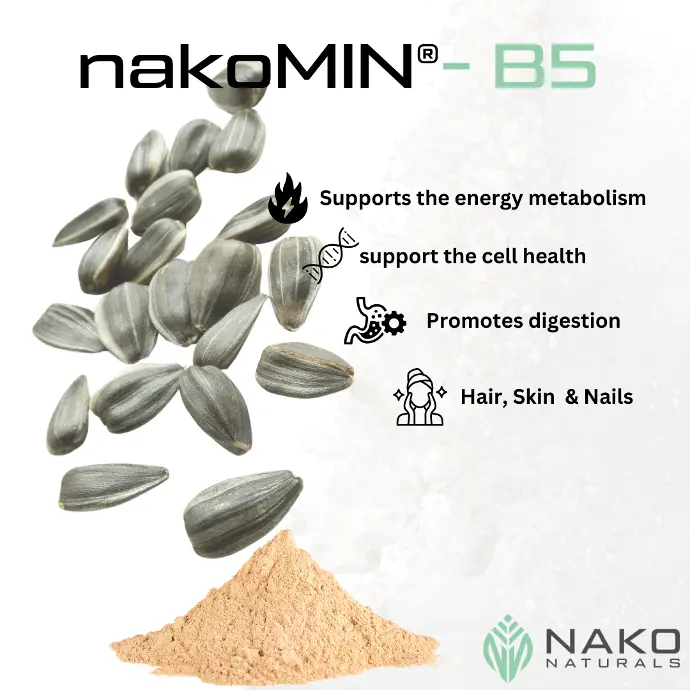Product catalogue
Did you know?
NAKO NATURALS collaborates directly with farmers to implement advanced practices that enhance sustainability and cleanliness in cultivation, production, and distribution processes.
nakoMIN®-B5 - 3.0 % Panthothenic acid
| Botanical Name: | Helianthus annuus L. |
|---|---|
| Appearance: | powder |
| Plant Part Used: | seeds |
| Raw Material Used: | cultivated |
| Extraction Solvent: | Water |
| Extract Ratio: | 20:1 |
| Active Ingredient | Assay in % |
|---|---|
| Vitamin B5 (Pantothenic acid) | 3.0 |
| If the specification does not meet your requirement, please contact us for a tailor made one. |
Historical Background & Origin
The Greek word “pantothen” means “everywhere”. This means that almost all foods contain vitamin B5. Foods such as yeast, liver, fish, egg yolk, cereals and pulses are particularly good sources. However, there are also many other foods with which you can absorb pantothenic acid.
Vitamin B5 deficiency
As pantothenic acid is found in practically all foods, a deficiency is very rare. Vitamin B5 deficiency has only been found in connection with severe malnutrition, for example in developing countries, chronic inflammation in the intestinal area and in people suffering from alcoholism. Symptoms of such an undersupply are often nerve pain.
Pantothensäure (B5)
Without pantothenic acid, the body would not be able to obtain the energy it needs for all physical and mental activities from food. The water-soluble vitamin of the B group is called vitamin B5. It is a precursor of coenzyme A, which is particularly important for fat metabolism, i.e. for the breakdown and breakdown of fats. The enzyme also plays an important role in the utilization of carbohydrates and proteins. Particularly high concentrations of pantothenic acid are found in the liver, adrenal glands and kidneys as well as in the brain and heart.
Health Benefits
- Plays a major role in metabolic processes
- Supports blemished skin
- Supports the intestinal bacteria
- Helps to build up the cell membrane


